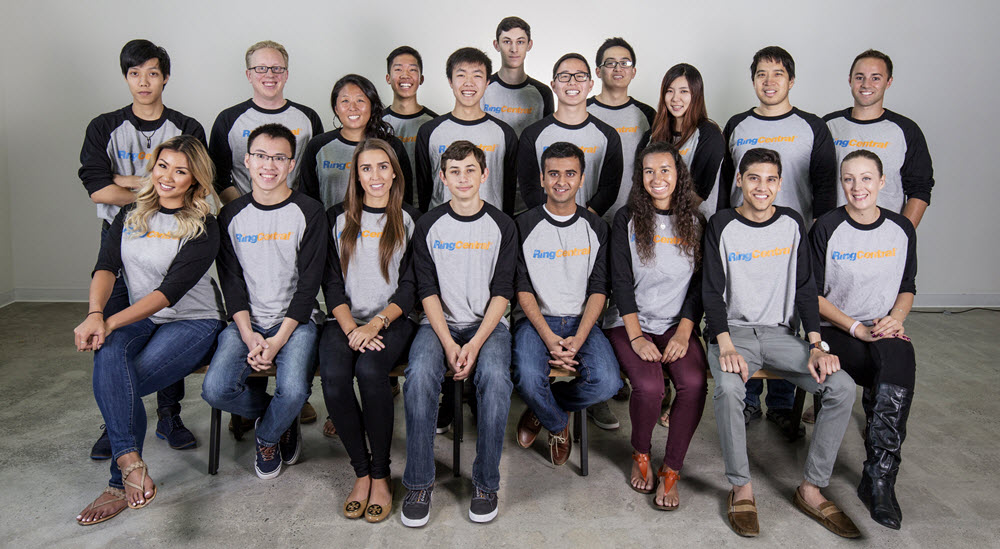From Xiamen to London to San Francisco, everyone is experiencing COVID-19 differently. But everyone can agree on one thing: it’s not a lot of fun. Keeping a global workforce safe, engaged and productive is a massive challenge. But it’s also an incredible learning opportunity. From home connectivity and ergonomics to provisioning to security, RingCentral IT is facing the challenges you’d expect…and a few you might not have.
As a cloud-first organization, RingCentral is better positioned than many companies to transition to working-from-home seamlessly.
“Everything that we do, all the services that we deliver to our end users (are) in the cloud, so it can be accessed anywhere” says Fred Chin, Senior Director, IT & User Services.
“Our standard is cloud-first, and that’s really enabled our users to quickly pivot from being in the office to working from home.”
But moving thousands of people to remote work in a short time frame still has its challenges – starting with home connectivity. A cloud-first organization only works when users have the ability to actually get to the cloud.
“For my team in Manila, Initially it was quite challenging for some people to work from home,” said Global IT Service Desk Senior Manager Paul Wallace. “It could be as simple as that last mile connection; the connectivity into a local ISP could be challenging.”
While it’s not feasible to magically connect every global user to a flawless ISP, the team did find solutions that kept large numbers of people productive in an incredibly short time.
“Once we knew we were planning to have everyone work from home, we asked ourselves “How do we secure the perimeter?” said IT Infrastructure Director Carlo Curato. “We created a process, (and a lot of sprint scripts,) that allowed us to provision a Virtual Desktop Interface for 1,100 workstations in five days. Once we had the plan in place, people were ready to log in and work right away.”
Obviously, a transition of this magnitude comes with challenges. Local support resources the IT team had once relied on were no longer there – which meant a fast ramp-up to meet an enormous demand for support.
“In Manila All of that desk-side IT support was stripped [away] and all of that stuff is coming to our team,” says Wallace. “And obviously, the user community at large is experiencing more difficulty because they’re trying to work remotely, so ticket volumes have gone way up. Fortunately we increased our headcount to meet demand, but it’s still been a challenging time.”
As a global company, IT faced a global set of challenges.
“We have a Xiamen office, so we kind of had a head start,” said Curato. “(Xiamen) started to work from home in January so we got a preview of what things would look like in preparation for a more global work-from-home deployment.”
“China didn’t have the network connectivity issues we saw in, say, Manila,” said Chin, “But they do limit certain traffic, like Google. So if one of our people who’s now working from home needs to access Google Drive, we needed to find some other mechanism by which that user can get to Google’s cloud. So we had to implement a VPN solution, then clear it with the Chinese government before taking it live. In the end, we were able to deploy a client, have our users download it, sign in and boom, good to go. So, 350 people, up and running pretty fast.”
Wherever in the world you sit, working from home is anything but an extended vacation.
One COVID-related trend that’s emerged? People working too much.
“What’s surprising to me,” says Chin, “is the fact that people feel they’re more productive working at home, and in some cases, they can’t stop working.”
Wallace agrees. “There was one person who was working so many tickets I felt like I should check in to see if she was ok. She told me “I’m stuck in the house—I’ve got nothing else to do, so I just log on and just start going.” I told her I appreciated it, but also to remember to take care of herself. I have been encouraging the whole team to maintain boundaries and a good work/life balance. I think that’s a trend that won’t just be limited to IT, or even RingCentral.”
As the team adapted to the new environment, they discovered tools to lighten the load.
“In March, we rolled out FreshService—a new IT Service Management system to help handle service requests and incidents,” Wallace continued. “Obviously, we weren’t planning on COVID-19, when we rolled it out, but we’re finding it’s really been helpful. it’s an easier interface the team can do things more quickly.”
The RingCentral platform itself is turning out to be one of the most useful tools of all.
“Having our own well-integrated product is a big deal,” says Curato. “Our platform makes it easy to just click to talk to a person, or reach them by video…It’s very efficient. I’m comparing notes with some of my peers who are working in other industries; they don’t even have voice to use their mobile phones to call each other up. For us, we can just switch tools, leverage teams, use one-click integrations…it’s just seamless. I think our own product is turning out to be a competitive advantage.”
From bandwidth issues to access restrictions to simply adjusting to work/life balance at home, RingCentral IT is at the forefront of a massive shift in business communications. We’re overcoming unprecedented challenges, discovering new ways of working, and bringing a world that’s been forced apart, a little closer together.
Originally published Jul 28, 2020, updated Dec 30, 2022




